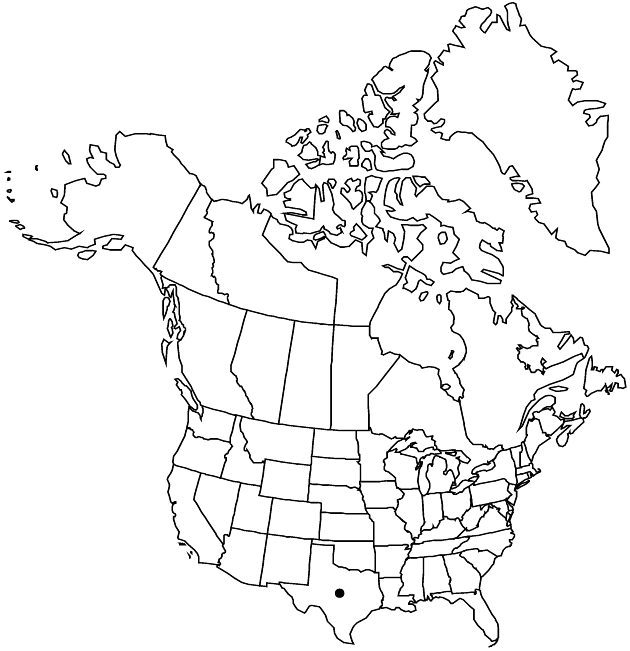Astranthium robustum
Publ. Mus. Michigan State Univ., Biol. Ser. 2: 521. 1965.
Common names: Texas western-daisy
Endemic
Basionym: Astranthium integrifolium var. robustum Shinners Field & Lab. 18: 158. 1950
Treatment appears in FNA Volume 20. Treatment on page 204.
Revision as of 20:50, 29 July 2020 by imported>Volume Importer
Annuals, taprooted. Stems usually 3–8, decumbent-ascending, sometimes 1, erect. Leaves: basal and proximal cauline 20–45 × 5–11 mm. Involucres 4–6.8 mm. Ray-florets 18–35; corolla laminae white or abaxially lavender, often drying pinkish, 8–13 mm. Disc-floret corollas 3.2–3.8 mm. Cypselae 1.4–2.1 × 0.7–1.2 mm, faces minutely, glandular-papillate-pebbly, uniformly sparsely to moderately glochidiate-hairy. 2n = 6.
Phenology: Flowering Mar–Jun.
Habitat: Disturbed sites in sandy or rocky soil, mesas, canyons, pine flats, roadsides, ditches
Elevation: 800–1400 m
Discussion
Astranthium robustum is known only from the trans-Pecos region.
Selected References
None.
Lower Taxa
None.
"narrower" is not a number."[" is not declared as a valid unit of measurement for this property."]" is not declared as a valid unit of measurement for this property.
... more about "Astranthium robustum"
introrse +
connate +
distinct +
herbaceous +
scarious +
hirsute +
papillate +
continuous +
decurrent +
1-nerved +
spatulate-obovate +
ribbed +
stigmatic +
persistent +
absent +
Texas western-daisy +
drying +
drying +
absent +
2-nerved +
dimorphic +
staminate +
Tex. +
straight +
glochidiate-hairy +
glandular-papillate-pebbly +
distinct +
proximal +
1;5 +
bisexual +
dispersed +
singly +
indeterminate +
surrounding +
hemispheric;campanulate +
petiolate +
alternate +
spreading +
deltate +
hyaline +
toothed +
thin-herbaceous +
inconspicuous +
subequal +
2-carpellate +
inferior +
attached +
anatropous +
absent +
coroniform +
tough +
thick +
absent +
connate +
persistent +
appressed +
distinct +
falling +
unequal +
Publ. Mus. Michigan State Univ., Biol. Ser. +
1965 +
pistillate +
absent +
fertile +
epaleate +
pitted +
conic +
fibrous +
exalbuminous +
modifed +
Endemic +
alternate +
branched +
lanceolate-acute +
2-branched +
glabrous +
Astranthium robustum +
Astranthium +
species +
tubular-funnelform +
much shorter +
taprooted +
annual +
